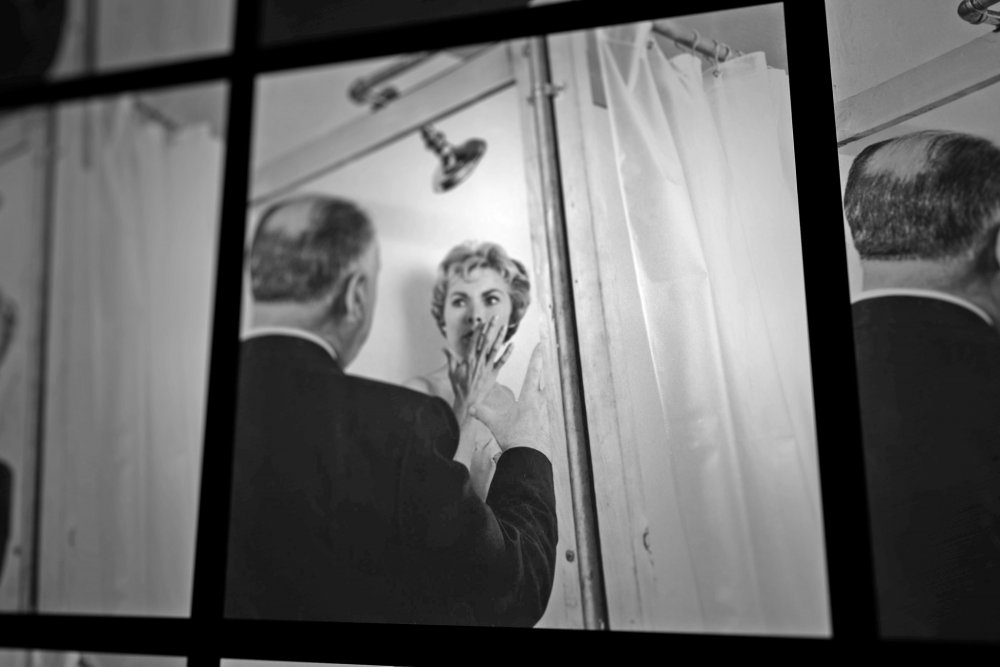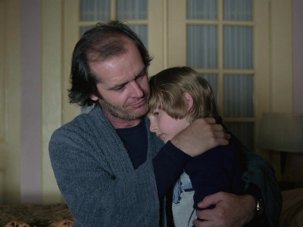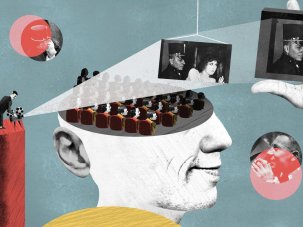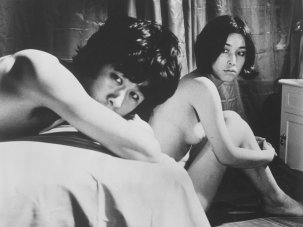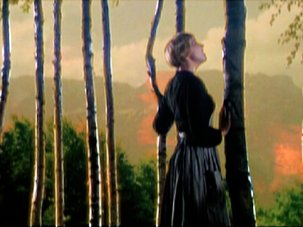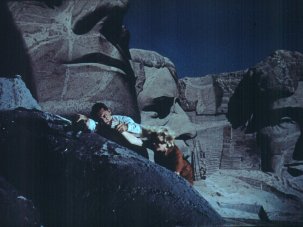Watching the new film 78/52, essentially a varied and scrupulous microanalysis of another film, or small section of film (the shower scene in Psycho), you can hardly be blamed for thinking that something peculiar is going on in the film culture at large, and that its viral profile mates especially well with Alfred Hitchcock. Or, at least, the particular kind of filmmaker Hitchcock was – mechanically devious, gleefully manipulative, subtextually elaborate, structurally experimental; a big bad believer in the subconscious power of imagery, the resonance of visual codes and the meaning of collective anxiety.
78/52 is released in UK cinemas and on VOD on 3 November 2017.
Have we merely slipped down a geek-buttered rabbit-hole, exploring and exploiting the new generation’s hipster knack for retro minutiae? Or is it some kind of autumnal phase in our collective film brain, an obsessive recounting of discovered secrets before senility sets in and the legacy’s vitality vanishes with the use of film stock itself?
Or is it Hitchcock’s fault? No other filmmaker has ever been so gratuitously copied and homaged (even by someone as sui generis as David Lynch) or, more recently, so remythologised as a significant figure for 21st-century delectation. The new re-Hitchcock-isation of our world has been in full swing for maybe a decade now, several years after Gus Van Sant’s crazily faithful Psycho remake (1998), which at the time seemed to everyone dementedly unnecessary but today looks like a kind of self-reflexive prophecy.
Certainly, there have been more making-of documentaries about Hitchcock films than any other director by a country mile, and no other filmmaker has ever been graced with two biopics, Hitchcock (2012) and The Girl (2012), both ungainly stunts demonstrating, among other things, how firmly the man’s distinctive physical and aural profile remain with us, and therefore resistant to actors’ impersonations. (With Nixon, Surviving Picasso and Hitchcock, Anthony Hopkins has pulled a career hat-trick of unconvincing historical portrayals.) In each the effort to dramatise the productions of Psycho and The Birds, respectively, only set up mirrored hallways in our heads, waxwork-ing Hitchcock’s off-camera legend in ways that, say, John Ford, Douglas Sirk or Nicholas Ray will never endure.
Of course, Hitch began erecting this funhouse’s framework himself, in his shadow career as America’s creepy-but-avuncular discomfort emcee, in numerous original trailers, his weekly TV show (running for a full decade), his famous spot-the-fat-man cameo appearances and even a series of popular suspense-story anthologies, all of it revelling in the elements of the Hitch brand (his obese profile, his laconic speech patterns, his deadpan manner, his taste for morbidity), and all of it threatening to overshadow the movies and convince us that he was something more than a film director – a pop-culture demiurge, or a Mabuse-like master of cultural ceremonies.
Was it just publicity, or was it a sidewise autocritique? The wealth of Hitchcockiania can inevitably act as a set of David Foster Wallace footnotes running alongside, or beneath, any consideration of his films, which may be the point of the new surge in the subculture we’re seeing. It’s certainly the focus of Johan Grimonprez’s Double Take (2009), a slippery doc crafted around Hitchcockian doppelgangers and versioned identities, picking at the multiplicities of the man’s meaning in the culture: editing footage so Hitchcock sees himself on the street (as ‘the wrong man’), injecting contemporary footage of physical Hitchcock simulacrum Ron Burrage and vocal Hitchcock impersonator Mark Perry, and generally weaving a contemplative web around the world’s most famous filmmaker’s propensity for deceptive resonances.
While Lindsay Luecht’s Alfred Hitchcock: Master of Suspense (2013) is a conventional, even redundant, piece of hagiography, Kent Jones’s Hitchcock/Truffaut (2015) is another doubled and repurposed artefact – a film jerry-rigged from the footage of the famous interviews that became the eponymous book, making it less a film about Hitchcock than a meta-doc about the forgotten celluloid shot for a rather granular book about one director’s devotion to another’s filmography.
If anything, 78/52 is the next logical, even fractal step, a feature doc about a single scene made possible by that scene’s filmmaker’s obsessive architectural strategies and his self-publicised lust for inflicting a new kind of experience on his audience. That may be the primary idea we can come to agree on during this neo-Hitch mini-zeitgeist: that the nature of Hitchcock’s filmmaking, coloured as it always was by the man’s personality reimagined and inserted into the cultural stream, invites the hyper-analysis. His arsenal was his alone: a god-like assumption of power coupled with insidious viewer control, modulated by outrageous Freudian codes and aggressively meaningful imagery, all managed as high-profile studio-system entertainment.
The only other filmmaker to have had something like this heady cocktail of ingredients was Stanley Kubrick, whose school of hyper-analysis has already opened with Rodney Ascher’s Room 237 (2012). It’s hard to beat this Nabokovian gout of obsessive conjecture for I-never-meta dooziness – it’s the first feature film entirely about what another feature film might actually be about and probably isn’t. What the sultanic and secretive Kubrick may or may not have intended is, now that he’s dead, a great unknowable, making Ascher’s itch-scratching folly a manifestation of what we could call ‘extreme interpretation’, a fan mode of engagement with a film that surpasses notions of auctorial purpose, genre study or thematic context, and therefore becomes just a cataract of zesty acts of creative fiction-making on its own. Room 237’s brand of ‘over-reading’ isn’t analysis so much as invention, a way to turn ordinary passive movie-watching into active fabricating participation, turning Kubrick’s film into the Overlook itself, a haunted house with an infinite capacity for hidden realities.
But The Shining is that kind of film, and Kubrick was that kind of filmmaker – the combo platter of genre fun, directorial imperiousness and textual slippages summons a Pandora’s box effect. This was common in Kubrick’s late work – the head-shaking weirdness of Eyes Wide Shut may yield, with time, its own library of Babel, and Full Metal Jacket, despite its solid-footing historical context and sociopolitical thrust, exudes a certain amperage of pure mystery.
Of course, 2001: A Space Odyssey is the aboriginal enigma-as-film, and yet The Shining has it beat – the inexplicability of alien intelligence turns out to be a far less fecund and inspiring junkyard for theory-bakers than the isolated maze-house, the family in meltdown and the metaphysical imposition of the past on the present. We’ll see if a full-on Kubrick subculture emerges in the years ahead, as the generational clock turns over once again and fascinated new cinephiles find new ways to run the mazes. I’d bet on it, just as we’re bound to eventually see entire films biopsying the films – or scenes or even single images, à la Godard and Gorin’s Letter to Jane (1972) – by David Lynch and maybe even Wes Anderson.
At the very least, this recessive mode of film culture suggests yet again how our watching of films has changed – Psycho, for instance, is no longer the ordeal or spectacle or ordeal-spectacle it once was, but a rewatchable, rewindable, atomisable, flowchart-able slab of charismatic megafauna, of a kind unimaginable before the advent of home video and online platforms. The secrets of a film, and of its production, are no longer the emperor-director’s, but ours to rehash, co-opt, convert into movies of our own. Hitchcock himself is no longer merely ‘the master of suspense’, but a Promethean trickster subject to a thousand different ways of seeing and reinterpretation. Being a viewer has become an artisanal activity. We are the auteur, as Roland Barthes once predicted, and cinema will evolve accordingly.
- 78/52 is reviewed in the November 2017 issue of Sight & Sound
-
The Digital Edition and Archive quick link
Log in here to your digital edition and archive subscription, take a look at the packages on offer and buy a subscription.




